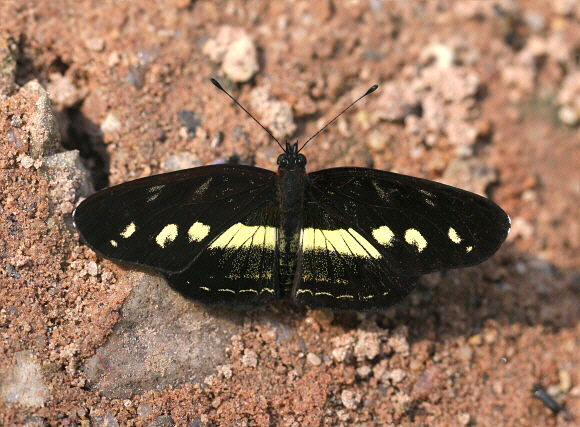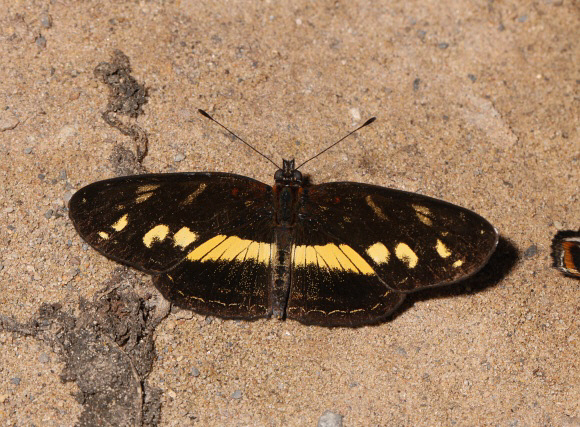
Introduction
The tribe Melitaeini is of worldwide distribution. It includes the Crescents and Checkerspots of North America, and also many familiar European species such as the Marsh, Spotted and Heath Fritillaries.
Eresia are closely related to Castalia, Anthanassa and Janatella, in fact that these genera can only be distinguished by microscopic examination of the male genitalia.
The 20 Eresia species fall into 2 distinct groups. Some e.g. nauplius are black with bands or patches of white. Most however are strongly marked in black and orange, and regarded as Batesian mimics of toxic Ithomiinae or Acraeini.
Eresia polina is distributed from Colombia and Venezuela to Bolivia. There are 5 subspecies – in the typical form polina from Ecuador, Peru and Bolivia the butterfly is marked with creamy-white, while the northern subspecies joaquini, oblita, lycus and laias are marked with orange or yellowish.
Habitats
This species is widespread and fairly common at altitudes between 200-1800m, occupying disturbed forest edge habitats where there is a profusion of low vegetation.
Lifecycle
I have no information specific to polina but the lifecycle is probably similar to that of ithomioides, in which the pear-shaped eggs are cream coloured, and laid in batches of up to 70 beneath leaves of Pilea ( Urticaceae ). At least one other Eresia species – coena, oviposits on Justicia ( Acanthaceae ). The larva of ithomioides is dark green with orange spikes and white dots along the back. The head and legs are orange. Its pupa is olive-brown, shiny, and suspended by the cremaster from stems.
Adult behaviour
Both sexes nectar at flowers, but the butterfly is more often seen when males settle in hot sunshine to imbibe moisture from sandbanks, river beaches or peccary wallows. They usually feed and bask with the forewings swept back, so the prominent creamy spots on the forewings align with the bar across the hindwings.

